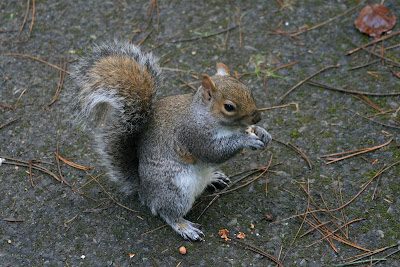 |
| European Roller (Coracias garrulus) A common winter visitor and passage migrant to Kenya. This one was photographed at Galana Ranch. |
 |
| Vulturine Guinea Fowl (Acryllium vulturinum) A very localised resident of dry thornbush areas of Kenya. These birds were photographed at Galana Ranch. |
 |
| White-bellied Bustard (Eupodotis senegalensis) Local resident of open bush. Photographed at Galana Ranch. |
 |
| Helmeted Guinea Fowl (Numida meleagris) Locally common in thornbush areas and open country. Photographed at Galana Ranch. |
 |
| White-throated Bee Eater (Merops albicollis) Possible local breeding bird but mainly a passage migrant in Kenya. This one was pictured on the C103 road close to Tsavo East National Park. |
 |
| Senegal Plover (Vanellus lugubris) Local and nomadic in open or bushed grassland. Pictured at Galana Ranch. |
 |
| Von der Decken's Hornbill (Tockus deckeni) Small hornbill, common on the coastal lowlands, south of Malindi. Pictured on C103 road near Tsavo East National Park. |
 |
| White-browed Coucal (Centropus superciliosus) Widespread in bush and moist thickets. Most common near water. Photographed at Turtle Bay, Watamu. |
 |
| Streaky Seedeater (Serinus striolatus) Common Kenyan finch. Pictured on an overhead power line in Nairobi. |
| Superb Starling (Lamprtornis superbus) Fairly widespread in bush and grassland. Pictured at Galana Ranch. |
 |
| Speckled Mousebird (Colius striatus) The familiar mousebird of Kenya's gardens and cultivated areas. Pictured sitting on an overhead power cable, outside the hotel window in Nairobi. |
 |
| Steppe Eagle (Aquila nipalensis orientalis) Palearctic migrant, to north eastern Kenya. Pictured at Galana Ranch, not far from the southern bank of the river. |
 |
| Eastern Pale Chanting Goshawk (Merierax poliopterus) Fairly common in dry country. This individual was pictured at Galana Ranch. |
 |
| Golden Palm Weaver (Ploceus bojeri) Found in coastal areas. This one was pictured close to the beach at Turtle Bay. |
 |
| Black-headed Plover (Vanellus tectus) Locally common in dry bush. This one was pictured at Galana Ranch. |
 |
| Black-faced Sandgrouse (Pterocles decoratus) Locally common on grassland. Pictured on C103 road west of Malindi. |
 |
| African Pied Wagtail (Motacilla aguimp vidua) The common black and white wagtail of town and countryside in Kenya. Pictured beside the swimming pool at Turtle Bay Villas, Watamu |
 |
| Lilac-breasted Roller (Coracias caudata)Fairly common and widespread in open bush, woodland and cultivation. Pictured at Galana Ranch. |
 |
| Black Kite (Milvus migrans) Widespread in Kenya. I photographed this one through the window of our hotel in Nairobi. |
 |
| Spur-winged Plover (Vanellus spinosus) Common south of the Galana and Sabaki Rivers, This one was photographed at Galana Ranch |
 |
| Dimorphic Egret (Egretta garzetta dimorpha) Apparently rare away from the coast. This one was pictured on a mud bank on the Galana River. |
 |
| Tawny Eagle (Aquila rapax) Widespread throughout Kenya, Photographed at Galana Ranch. |
 |
| Sooty Tern (Sterna fuscata nubilosa) Frequently seen at sea beyond the inshore reefs over deeper water. Photographed early in the day off Watamu. |



























++.jpg)




